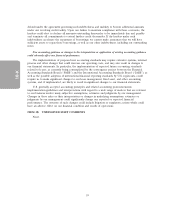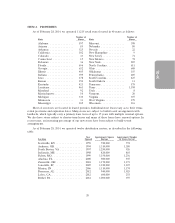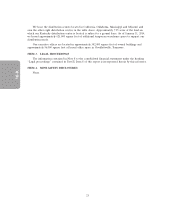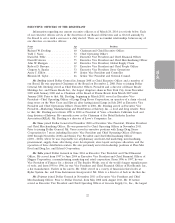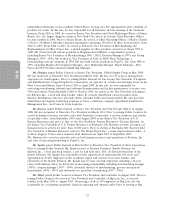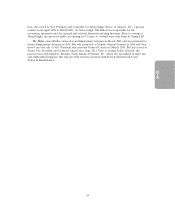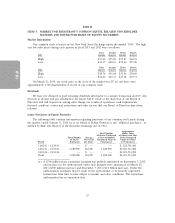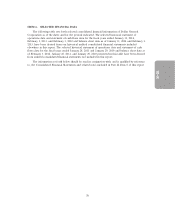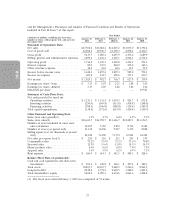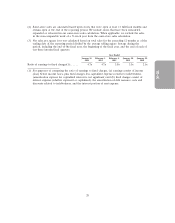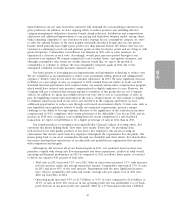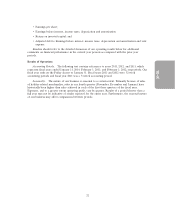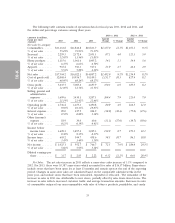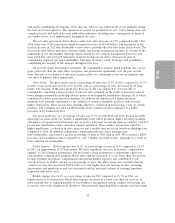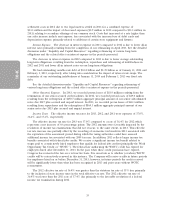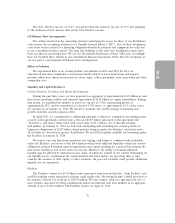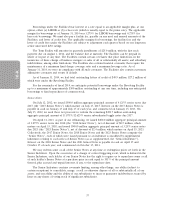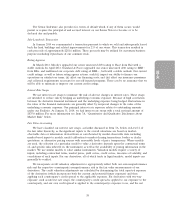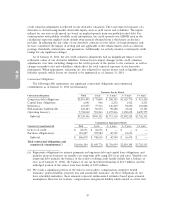Dollar General 2013 Annual Report Download - page 106
Download and view the complete annual report
Please find page 106 of the 2013 Dollar General annual report below. You can navigate through the pages in the report by either clicking on the pages listed below, or by using the keyword search tool below to find specific information within the annual report.
ITEM 7. MANAGEMENT’S DISCUSSION AND ANALYSIS OF FINANCIAL CONDITION AND
RESULTS OF OPERATIONS
This discussion and analysis should be read with, and is qualified in its entirety by, the Consolidated
Financial Statements and the notes thereto. It also should be read in conjunction with the Cautionary
Disclosure Regarding Forward-Looking Statements and the Risk Factors disclosures set forth in the
Introduction and in Item 1A of this report, respectively.
Executive Overview
We are the largest discount retailer in the United States by number of stores, with 11,215 stores
located in 40 states as of February 28, 2014, primarily in the southern, southwestern, midwestern and
eastern United States. We offer a broad selection of merchandise, including consumable products such
as food, paper and cleaning products, health and beauty products and pet supplies, and
non-consumable products such as seasonal merchandise, home decor and domestics, and basic apparel.
In 2013, we began selling tobacco products in our stores, with very favorable response from our
customers. Our merchandise includes high quality national brands from leading manufacturers, as well
as comparable quality private brand selections with prices at substantial discounts to national brands.
We offer our customers these national brand and private brand products at everyday low prices
(typically $10 or less) in our convenient small-box (small store) locations.
The customers we serve are value-conscious, many with low or fixed incomes, and Dollar General
has always been intensely focused on helping them make the most of their spending dollars. We believe
our convenient store format and broad selection of high quality products at compelling values have
driven our substantial growth and financial success over the years. Like other companies, we have been
operating for several years in an environment with ongoing macroeconomic challenges and
uncertainties. Our customers are facing sustained high rates of unemployment or underemployment,
fluctuating food, gasoline and energy costs, rising and uncertain medical costs, including concerns over
government mandated participation in health insurance programs, reductions in government benefits
programs, continued challenges with affordable housing and consumer credit, and the timetable and
strength of economic recovery for our core customers remains uncertain. The longer our customers
have to manage under such difficult conditions, the more difficult it is for them to stretch their
spending dollars, particularly for discretionary purchases.
At the beginning of 2008, we defined four operating priorities, which we remain keenly focused on
executing. These priorities are: 1) drive productive sales growth, 2) increase, or enhance, our gross
profit margins 3) leverage process improvements and information technology to reduce costs, and
4) strengthen and expand Dollar General’s culture of serving others.
Our first priority is driving productive sales growth, including by increasing shopper frequency,
item unit sales and transaction amount. In 2013, sales in same-stores increased by 3.3% over 2012
levels due to increases in both traffic and average transaction. Successful sales growth initiatives in 2013
included the addition of tobacco products; the expansion of the number of coolers for refrigerated and
frozen foods and beverages in over 1,600 existing stores; the optimization of shelf space, including the
reduction of hanging apparel in many of our smaller stores; and the impact of 582 remodeled and
relocated stores during the year. Inflation had a very modest impact on our sales in 2013 and 2012. In
addition to same-store sales growth, we opened 650 new stores.
Our second priority is to increase, or enhance, our gross profit rate. However, in early 2013, we
made a strategic decision to add tobacco products in our stores with the primary goal of increasing
customer traffic. The addition of tobacco products and the increased proportion of sales of perishables,
largely resulting from our continued expansion of coolers in the stores, both led to a decrease in our
overall gross profit rate in 2013. We believe that both of these merchandise classes are significant
drivers of customer traffic that should lead to increases to average purchase amount. We expect the
29
10-K


